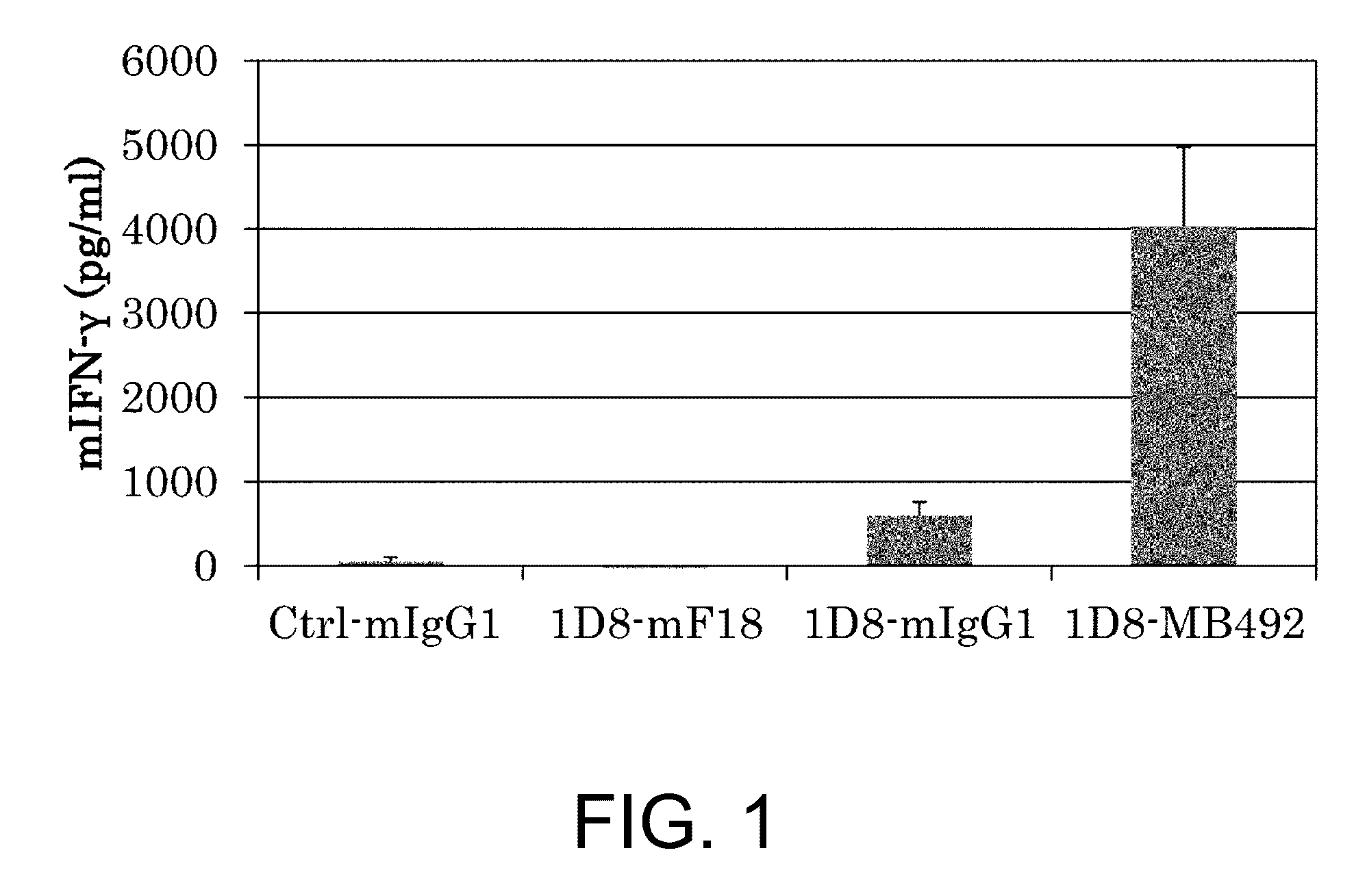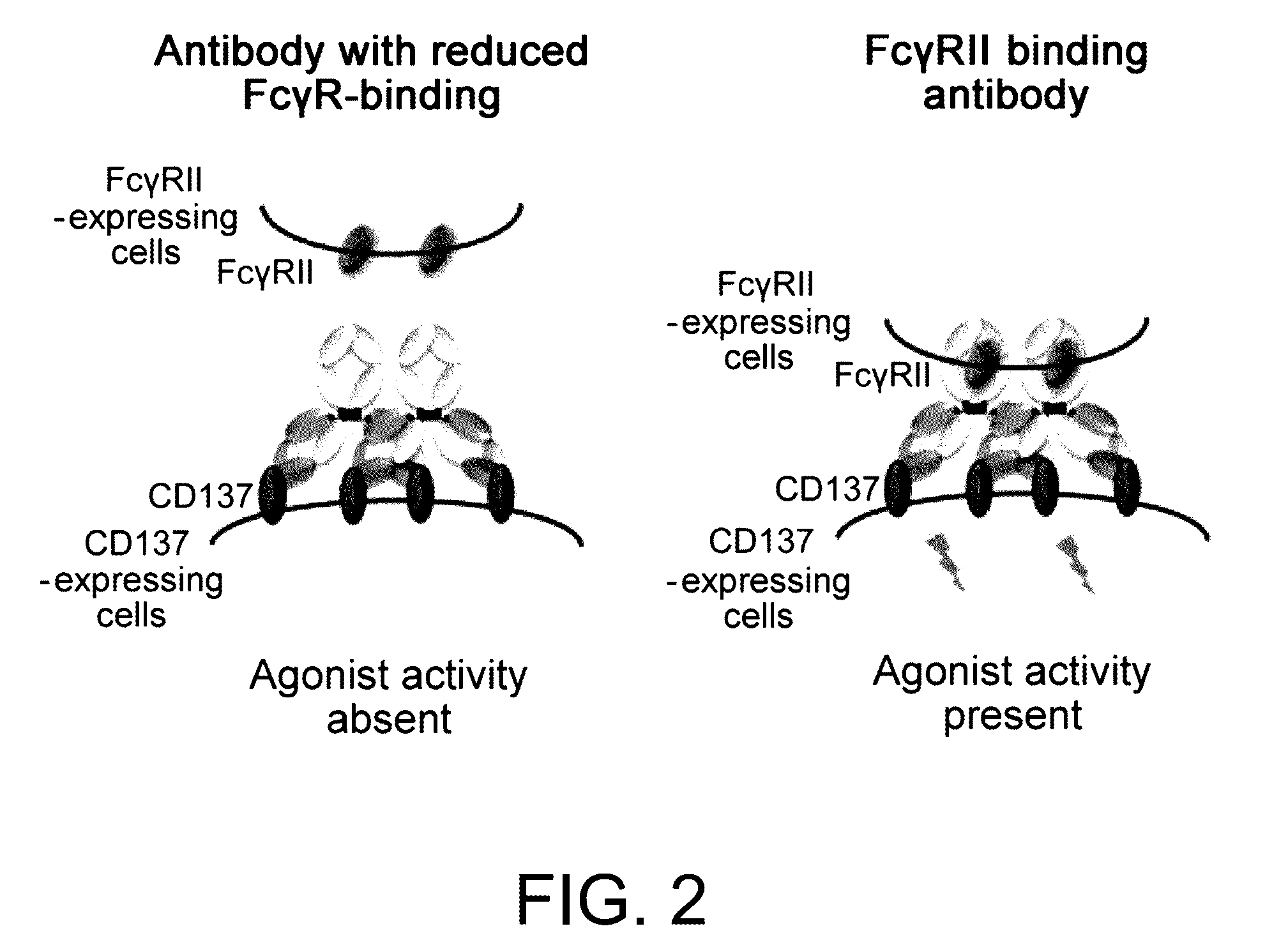Immunoactivating Antigen-Binding Molecule
a technology of immunoactivating and binding molecules, which is applied in the direction of antibody medical ingredients, drug compositions, peptides, etc., can solve the problems of poor prognosis of high expression of hepatoma tissue gpc3, poor prognosis of high-grade hepatoma tissue gpc3, and poor treatment effect of chemotherapeutic agents, and achieve excellent anti-tumor effects
- Summary
- Abstract
- Description
- Claims
- Application Information
AI Technical Summary
Benefits of technology
Problems solved by technology
Method used
Image
Examples
reference example 1
Construction of Antibody Expression Vectors, and Expression and Purification of Antibodies
[0351]Synthesis of full-length genes encoding the nucleotide sequences of the H chain and L chain of the antibody variable regions was carried out by production methods known to those skilled in the art using Assemble PCR and such. Introduction of amino acid substitutions was carried out by methods known to those skilled in the art using PCR or such. The obtained plasmid fragment was inserted into an animal cell expression vector, and the H-chain expression vector and L-chain expression vector were produced. The nucleotide sequence of the obtained expression vectors was determined by methods known to those skilled in the art. The produced plasmids were transiently introduced into the HEK293H cell line derived from human embryonic kidney cancer cells (Invitrogen) or into FreeStyle293 cells (Invitrogen) for antibody expression. The obtained culture supernatant was collected, and then passed throu...
reference example 2
Method for Preparing Mouse Fcγ Receptor (mFcγR) and Method for Analyzing the Interaction Between a Modified Antibody and mFcγR
[0352]Extracellular domains of mouse FcγRs were prepared by the following method. First, genes of FcγR extracellular domains were synthesized by a method well known to those skilled in the art. In so doing, the sequence of each FcγR was produced based on the information registered at NCBI. Specifically, mFcγRI was produced based on the sequence of NCBI Reference Sequence: NP_034316.1; mFcγRII was produced based on the sequence of NCBI Reference Sequence: NP_034317.1 mFcγRIII was produced based on the sequence of NCBI Reference Sequence: NP_034318.2; and mFcγRIV was produced based on the sequence of NCBI Reference Sequence: NP_653142.2. A His tag was attached to the C terminus of these sequences. Each of the obtained gene fragments was inserted into an animal cell expression vector to construct expression vectors. The constructed expression vector was transien...
reference example 3
Experimental Animals and Cell Lines
[0353]The experimental animals used were female C57BL / 6 mice (Charles River Laboratories Japan. Inc.) or female Balb / c mice (Charles River Laboratories Japan, Inc.). They were bred in a breeding room under constant conditions (temperature: 20° C. to 26° C.; lighting: 12-hour light-dark cycle) with ad libitum access to feed and water. The human GPC3 gene was integrated into the chromosome of the mouse lung cancer cell line LLC (ATCC No. CRL-1642) by a method well known to those skilled in the art to obtain an LLC-GPC3 cell line that expresses human GPC3 in high levels. The expression level of human GPC3 (2.3×105 / cell) was determined using the QIFI kit (Dako) by the manufacturer's recommended method. Similarly, the human GPC3 gene was integrated into the mouse colorectal cancer cell line CT-26 (ATCC No. CRL-2638) to obtain the high expression CT26-GPC3 cell line (expression level: 3.1×105 / cell). To maintain the human GPC3 gene, these recombinant cell...
PUM
| Property | Measurement | Unit |
|---|---|---|
| Composition | aaaaa | aaaaa |
| Cytotoxicity | aaaaa | aaaaa |
Abstract
Description
Claims
Application Information
 Login to View More
Login to View More - R&D
- Intellectual Property
- Life Sciences
- Materials
- Tech Scout
- Unparalleled Data Quality
- Higher Quality Content
- 60% Fewer Hallucinations
Browse by: Latest US Patents, China's latest patents, Technical Efficacy Thesaurus, Application Domain, Technology Topic, Popular Technical Reports.
© 2025 PatSnap. All rights reserved.Legal|Privacy policy|Modern Slavery Act Transparency Statement|Sitemap|About US| Contact US: help@patsnap.com



